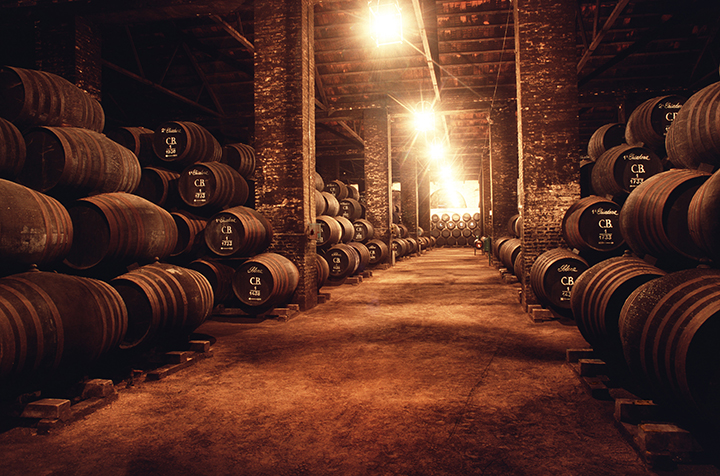
Sometimes, at the end of a good meal, I’m in the mood for a dessert wine that I can sip slowly while contemplating the waning day. Not one of those cloyingly sweet wines that most of us have come to detest, but something interesting, intense and … well … special. Several wines fit this description if you’re willing to pay a premium, but if you’re looking for a bargain a great place to look is Spain’s Montilla-Moriles region.
- Montilla-Moriles is located in south-central Spain’s Andalucía province, not far from the Mediterranean coast. Although Montilla makes a range of wine styles, it’s best known for its excellent, and relatively inexpensive, dessert wines.
Montilla’s sweet wines are distinctive. They’re made from the white Pedro Ximénez grape using an unusual winemaking process. First, the grapes are hand harvested and left outside to dry on straw mats for four to ten days, until they’ve shriveled into raisins. That concentrates the sugars and flavors in the grapes. Next, the raisins are vinified in barrels or clay amphoras – the sort of vessels that have been used to make wine since the Roman era. Finally, the wine is aged in something called a soleras y criaderas system, the same method that’s used to make Sherry in nearby Jerez.
- The soleras y criaderas, pictured above, consists of a series of oak barrels stacked one row on top of another, as many as four or five rows high. Simplistically, finished wine is drawn from the bottom row and bottled, and that row is replenished from the row above it. In turn, each row is replenished from the row above it until you reach the top row, which is filled with new wine. It takes years for the wine to move from the top row to the bottom.
- This process results in the constant "fractional blending" of younger wines into older wines during the aging process. Wines aged in a solera don’t carry a vintage date; instead their label indicates the year in which the solera was founded. Since the solera barrels are never completely emptied, the final product is a mixture of wines spanning many years. Thus, a wine from a 1927 solera is thought to contain at least some wine molecules from each year back to 1927.
Our wine of the week is the highly regarded Alvear Pedro Ximenez Solera 1927 (about $28 for a 375 ml bottle). It’s made by the family-owned Bodegas Alvear, considered to be the best of the Montilla producers. Founded in 1729, Spain’s second oldest winery is now being run by the family’s eighth generation. The wine is made from 100 percent Pedro Ximénez grapes and aged five years in a soleras y criaderas system started in 1927. The bottom line is that it lived up to its reputation, and we've added it to our Wine Concepts favorite list.
- This dark brown-colored wine has notes of molasses, fig, toffee, caramel, and coffee. It's viscous, bordering on chewy, but has a silky smooth texture. This wine is very sweet, moreso than a Sauternes, but it's not an overpowering sweetness. In fact, the wine is nicely balanced and intense, and has a long and very interesting finish. This Alvear contains16 percent alcohol.
- The Alvear is perfect by itself or can be paired with blue cheese or sweet fruity desserts. We tried it with a white chocolate and were blown away. If you’re feeling a little decadent, pour a little over a good quality vanilla ice cream!
- Theoretically, an open bottle that is tightly corked will be drinkable for several months. In practice, you’ll be lucky to have any left by the end of the evening!
A final note: due to our Labor Day vacation, our next blog will appear on September 16.
Cheers!
